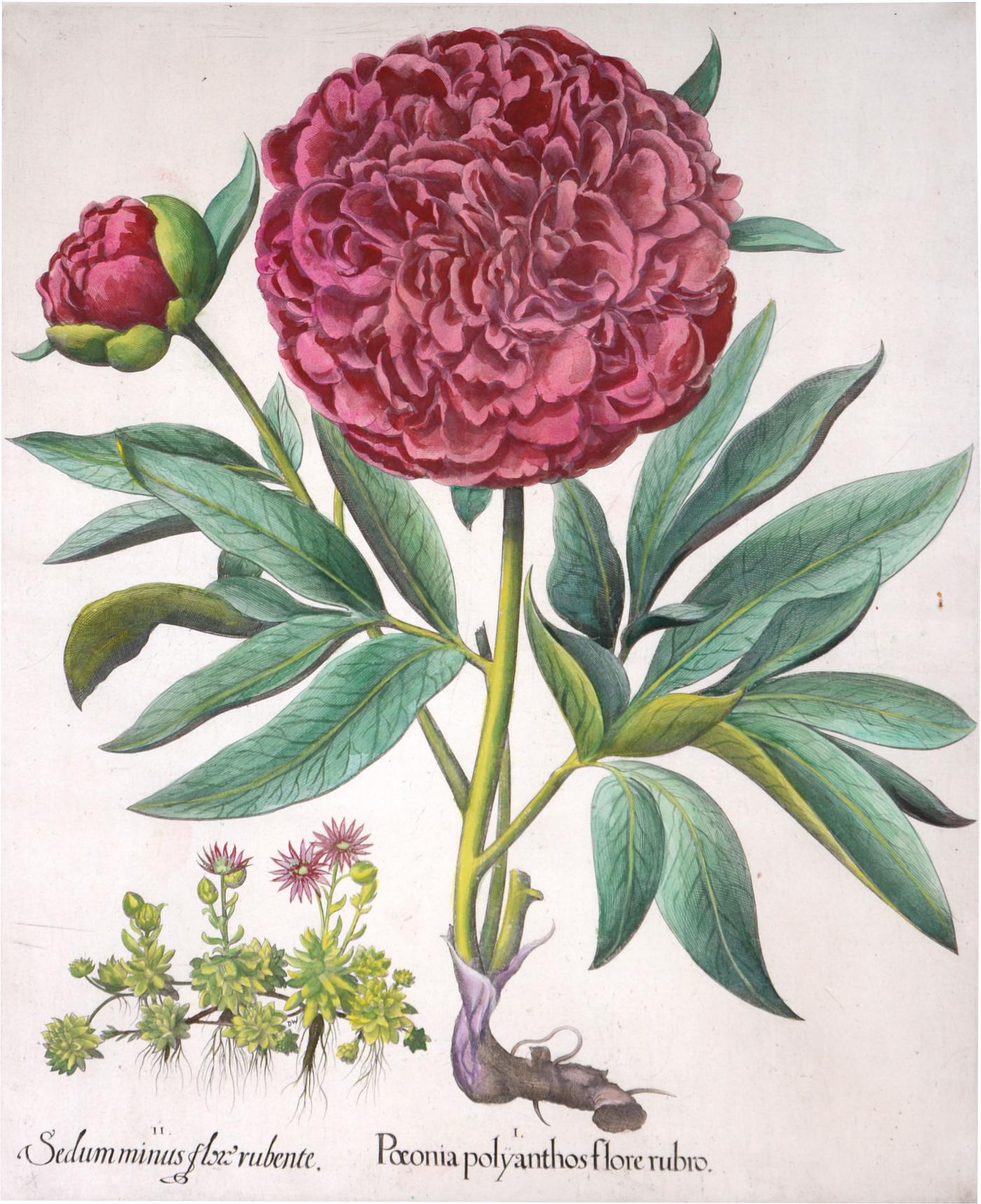The Poinsettia remains a favorite plant for the holidays. Plants, like people, sometimes make a…
Familiar Plants in the German Castle Gardens of 1613

The German castle Willibaldsburg was built in Eichstatt, part of Bavaria, in the fourteenth century.
The castle served as the residence for the local Bishop.
By the seventeenth century the castle had become famous for its beatiful gardens.
The Bishop then was Prince Bishop Johann von Gemmingen (1561 – 1612).
Bishop Gemmingen chose local apothecary Basilius Besler (1561-1629) to design the gardens. He also asked him to compile a book of plates of the plants in the garden.
Besler would complete the book in 1613 after the death of Bishop Gemmingen.
The book included almost 1100 plant types in a total of 367 copperplate engravings.
Besler enlisted several engravers to work on the plates for the book he called Hortus Eystettensis.
A recent (2007) edition of the book has once again put the castle gardens of Eichstatt in the spotlight. The book’s new title is The Book of Botanical Prints: The Complete Plates.
Familiar Plants
As I paged through Basilius Besler’s beautiful book [below] I recognized many of the flowers.

These same plants were probably appearing in other European gardens at that time as well.
The Besler book, compiled in the seventeenth century, listed some of our most popular and favorite plants.
You could say then that some of our favorite garden plants owe their presence in our gardens today to a long tradition in the garden.
Besler reveals that traditon in his choice of garden plants to include in the book.
Rose Campion
An example from Besler’s book is the lychnis coronaria or rose campion. Here is his plate from the book. [below]
I have grown this biennial in my garden for many years. The patch of rose campion leaves one summer holds the promise that you will see its rose flowers the next summer. I always knew that.
You can easily recognize this plant by its leaves with their gray/green color.
Taylor’s Encyclopedia of Gardening calls rose campion an ‘escape’ plant. That means “A cultivated plant has run wild and maintains itself without further cultivation.”
Perhaps that is why you don’t usually see this plant sold at garden centers.
It is already part of so many gardens.
It became part of my garden probably through a neighborhood plant sale.
Order of Plates in the Book
Besler created an order for the 367 plates in the book.
He included them in the order in which the plant flowers. Besler divided them into Spring, Summer, Autumn, and even Winter blooming plants.
What is so amazing is the number of plants I recognized in the collection of plates.
This book is evidence that our gardens today include many plants that have had a long history in the garden.

This Post Has 0 Comments